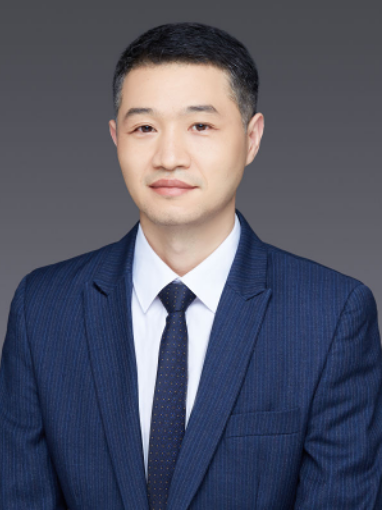
Speakers
| Prof. Xiaolin Qin, Deputy Chief EngineerChengdu Institute of Computer Applications, Chinese Academy of Sciences, China Sichuan Institute of Artificial Intelligence, China
Research Area:Automated reasoning, Algebraic vision, Big data intelligent analysis, Natural language processing technology Profile:Xiaolin Qin is currently a professor at the Chinese Academy of Sciences (CAS) as well as the University of CAS, China. He is a CCF senior and IEEE member. He received his Ph.D. degree in computer software and theory from the Graduate University of CAS, in 2011. From May 2014 to June 2015, he was a postdoctoral fellow at the Department of Computer and Information Science, Linköping University, Sweden. His research is partly supported by the China 973 Project, NSFC, STS, West Light Foundation of CAS, China Postdoctoral Science Foundation, and the EU. He has published more than 70 scientific papers in journals and conference proceedings. |
Prof. Ilan NoyVictoria University of Wellington, New ZealandResearch Area: Economic aspects of hazards, disasters, and climate change Profile:Professor Ilan Noy is the Te Āwhionukurangi Chair in the Economics of Disasters and Climate Change, established in 2013. The focus of the Chair is on the research and application of economics to the management of natural hazards, disasters, and climate change. Speech Title: Using Big Data to Calculate the Costs of Climate Change Abstract: Climate change is already increasing the frequency or severity of some extreme weather events, such as with rainfall during tropical cyclones. Extreme Weather Event Attribution, a branch of climate science, quantifies the extent to which anthropogenic climate change has already modified the frequencies and intensities of specific extreme weather events that have already occurred. We combine this information with detailed large sets of socio-economic data to provide useful insights about the economic costs of extreme weather events that were caused by climate change. We present two examples of such an approach. In the first, we examine Hurricane Harvey that hit Texas in 2017 and describe the micro-scale distributional implications of current climate change-induced impacts and assistance in the Harvey case. In the second example, using a meta-analysis of attribution studies, we aggregate the global current costs of climate change and show these are typically underestimated. We estimate that climate change-attributed extreme weather events have cost the world about US$140 billion a year during the past two decades. |
|
| A. Prof. Vipul JainVictoria University of Wellington, New ZealandResearch Area: Supply-chain management, Sustainable supply chain management, Circular Economy, Supply Chain Management 4.0, Humanitarian Logistics, Service operations and healthcare supply chains, Industry 4.0 Profile:Dr Vipul Jain is Associate Professor in Supply Chain and Logistics Management at Wellington School of Business and Government, Victoria University of Wellington, New Zealand. He was the Director of Doctoral Programme and Research Director for School of Management. Vipul is highly cited in his area of research on Operations and Supply Chain Management and has more than 130 archival publications to his credit in high impact factor journals, as well as conference papers, edited books and books chapters. Vipul is serving as an Editor-in-Chief, Associate Editor, Area Editor and editorial board member for many prestigious Operations and Decision-Making journals. Vipul has been actively involved in conducting Management Development Programmes/Training Programmes for Senior Managers and Executives of Public and Private Organizations in Asia on various issues and challenges encountered in Operations, Logistics, and Supply Chain Management. Speech Title: “SMARTNESS” THAT REALLY MATTERS: Reaching new levels of Customer Satisfaction with SMART Supply Chain Management Abstract:Recent dynamic events around the world have provided frequent reminders that we live in an unpredictable and changing world. It has become imperative for channel entities to incorporate risk management tools in the management of their supply chains. Further, there is no surety that supply chain players will conform to environmental norms and compliance standards, even as more and more of these are enforced into practice, the organizations most likely to get stranded are the ones looking simply at cutting supply chain costs. Smart operations, digital supply chains and sustainability can be considered from different points of view which imply an integration of industrial engineering, business informatics, management, and operations research competencies. This talk will discuss about the new emerging research methodologies which are geared towards providing and developing effective solutions for performance/risk analysis of integrated supply chain networks, making it smarter. This talk will also address emerging generic modeling and optimizing approaches which integrates various supply chain functions; capture all process-related information including activities, resources and organizational units as well as their interdependencies to support complex dynamic and distributed supply chain smart operations. Considering the dynamic characteristics of supply chain networks, the discussed research approaches can be utilized as a modeling and optimization tool to study the impact of different smart supply chain strategies and policies and will help the managers to build trust among supply chain partners. Briefly, this talk addresses the summary of work done in supply chain literature, provides key insights and future research directions while addressing several emerging research issues in complex and dynamic smart supply chain environments, thus providing strong implications for academia and supply chain practitioners. |
A. Prof. Dalin Zhang, The Chapter Chair of Computer Society, IEEE DenmarkAalborg University, DenmarkResearch Area: Data And Learning-based Intelligence with Novel application Profile:I am currently an Associate Professor in the Department of Computer Science, Aalborg University, Denmark. I am also a faculty member in the Center for Data-Intensive Systems (Daisy) with Prof. Christian S. Jensen. From 2020-2023, I was a tenure-track Assistant Professor at Aalborg University, Denmark. Before joining Aalborg University in Aug 2020, I was pursuing my PhD degree at the School of Computer Science and Engineering, the University of New South Wales Sydney, Australia from Apr 2017 to Apr 2020. I was an Australian Government Research Training Program (RTP) scholarship holder between 2017-2020 (awarded in 2016). My research interest lies in various aspects of data mining for time series and its applications in health management. I have published more than 40 peer-reviewed publications, including SIGMOD, PVLDB, ICDE, AAAI, IJCAI, IMWUT, TMC, TKDE, TCYB etc. I have been serving as the Chapter Chair of Computer Society, IEEE Denmark from 2020 to 2022. I also served as a PC member for top conferences like KDD, AAAI, IJCAI, SDM, CIKM etc. Speech Title: Deep learning for Correlated Time Series Forecasting Abstract:Correlated Time Series (CTS) forecasting poses intricate challenges across various domains, including finance, climate science, and healthcare. Traditional forecasting methods often struggle to capture the subtle dependencies and intricate patterns within CTS data, rendering accurate predictions elusive. In recent years, Deep Learning has emerged as a potent tool for addressing this complexity. This seminar hones in on two critical facets of CTS forecasting: Automated Deep Learning and Lightweight Deep Learning. Automated Deep Learning streamlines the design and configuration of deep learning models with minimal manual intervention. This encompasses automated tasks such as architecture search and hyperparameter tuning, aimed at enhancing the efficiency and accessibility of model development for practitioners. Conversely, Lightweight Deep Learning concentrates on crafting resource-efficient deep learning models tailored specifically for CTS forecasting. Our exploration delves into the creation of compact neural architectures, conducive to edge computing applications. These lightweight models shine in scenarios with limited computational resources, ensuring the generation of accurate forecasts, even in resource-constrained environments. |
|



